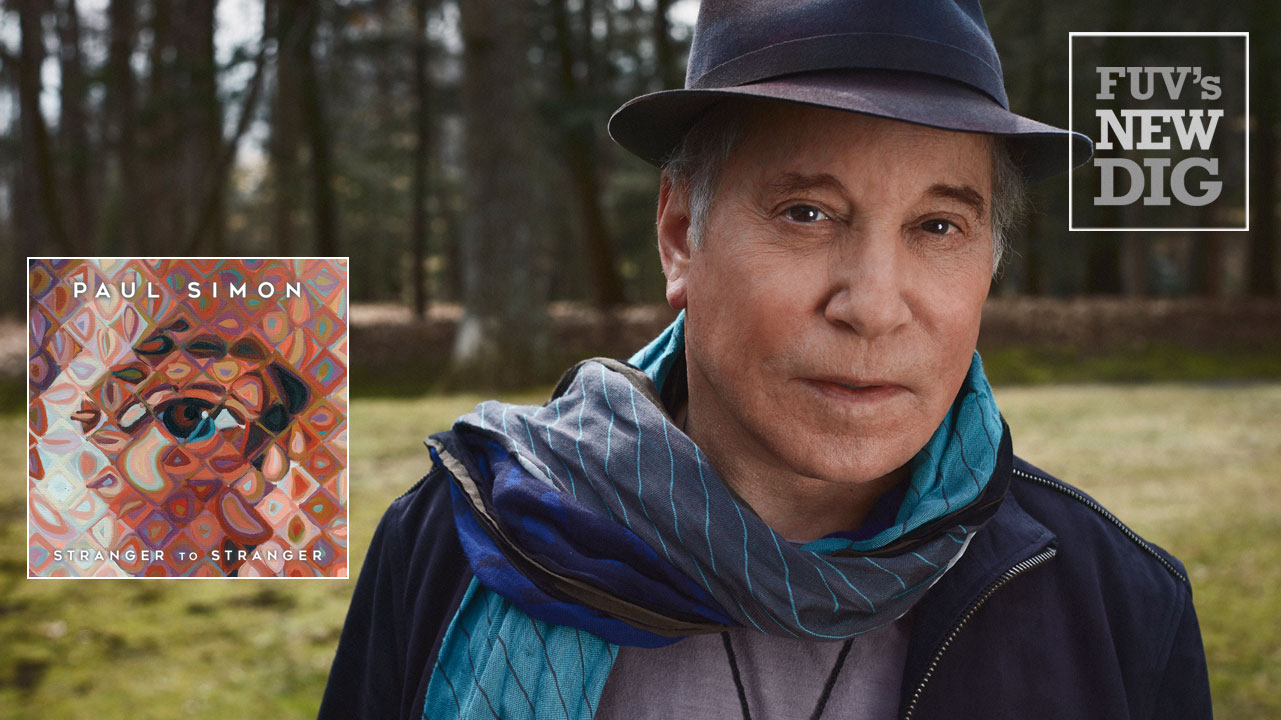Paul Simon

Paul Simon (photo by Myrna Suarez, PR)
Stranger to Stranger
Paul Simon
Concord Records
Paul Simon has never been just a singer and songwriter. From the beginning of his post-Simon and Garfunkel solo career, he has always strived to be an innovative composer and musician who is capable of creating albums that defied any easy expectations.
His latest release Stranger To Stranger, which comes five years after his last studio album, So Beautiful Or So What, is probably one of the more far-reaching efforts in Simon’s career. Simon draws on influences as diverse as twentieth century composer and theorist Harry Partch, the Italian dance music artist Digi G'Alessio who records as Clap! Clap!, and the rhythms of flamenco. Remarkably, Simon manages to pull all of this together, creating music that is imaginative, texturally rich and sonically alluring.
Of course, this inimitable approach is best defined by two of Simon’s landmark albums, 1986’s Graceland and its follow-up, 1990’s The Rhythm Of The Saints. In addition to those two benchmark releases, Simon’s solo albums have been dotted with a variety of influences over the years, including gospel and Dixieland music (There Goes Rhymin’ Simon), the sonic landscapes of Brian Eno (Surprise), film music (One-Trick Pony) and theatre (Songs From The Capeman). Throughout Stranger To Stranger, a warehouse of instruments come together: gopichand, hadjira, trombadoo, mbira, celeste, harmonium, bells and horns, as well as flamenco dancing.
“The Werewolf” and “Wristband,” the opening tunes on the album, are both simmering melting pots of flamenco and electronic beats that carry this wide assortment of instruments. The songs are as musically and rhythmically complex as anything in Simon’s canon. He utilizes drastically slowed down and reversed recordings of vintage gospel groups from the 1930s as the bed for “Street Angel.” Several instrumental interludes, including “The Clock” and “In The Garden Of Edie,” provide moments of reflection and they are also compositions originally intended for the 2016 Manhattan Theatre Club production of John Patrick Shanley's play Prodigal Son.
Topically, Stranger To Stranger is equally as fascinating as the sounds that carry the words. There are moments when the sounds produced by the instruments fuel the lyrics. “The Riverbank” is inspired by Simon's feelings after visiting with wounded war veterans and attending the funeral of one of the teachers who died in the 2012 Sandy Hook school massacre in Newtown, Connecticut. “Proof Of Love” draws on a recent visit he made to Brazil to see a healer. Later, Simon sings about “Cool Papa Bell,” a Negro League baseball player.
Stranger To Stranger reunites Simon with his longtime friend and collaborator, producer Roy Halee. Halee’s production assistance marks the first time he had his fingerprints on a Simon album since 1997’s Songs From The Capeman.
At 74, with a career that stretches back nearly sixty years, Simon continues to push the envelope and transform his art. On Stranger To Stranger he manages to revolutionize his music once again. It's a remarkable accomplishment, especially coming at this stage in his brilliant career.
Author's note: Harry Partch was an American composer and music theorist who divided the octave into forty-three tones, as opposed to the twelve in Western music. To play this microtonal music, Partch created a wide variety of custom-made instruments capable of executing the tones, including a Zoomoozophone, Cloud-Chamber Bowls, Harmonic Canon, and Chromelodeon.

